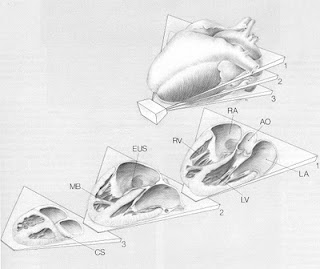Normal coronary anatomy: (Figures from Braunwald)


Coronary Anomalies in TOF
(Preoperative angiography in infants with tetrad of Fallot. Review of 39 cases. Am J Cardiol. 1981 Jun;47(6):1279-85)
Coronary Anomalies in d-TGA
Figure from Mavroudis's book:
(Ref: Rossi MB, Ho SY, Anderson RH, et al. Ann Thorac Surg 1986;42:573)

Figures from Eugene Braunwald's Atlas (Vol XII):
(TGA & Coronary Patterns - Ursula Sauer & Adrianna C. Gittenberger-deGroot)
1. General rules (observations) about coronary arrangement in TGA:
Four rules:
(a) Three main epicardial branches exist: ("L" for LAD, "CX" for LCX and "R" for RCA)
(b) Coronaries connect exclusively to the aortic sinuses that face the pulmonary orifice
(c) Connections between ostia and branches tend to take the shortest course; and coronaries never cross each other
(d) Positional nomenclature of the aortic sinuses facing the pulmonary orifice cause confusion.
Therefore, the following nomenclature is proposed by Dr. Gittenberger-deGroot.
2. Common Coronary Patterns in d-TGA:

Patterns of Intramural Coronaries in TGA:

Proximal course of coronary arteries in TGA:

Coronary pattern incidence in different types of TGA:

Figure from Aldo Castaneda's book:
Common Coronary Artery arrangements in d-TGA

Anatomy of the coronary arteries in TGA and methods for their transfer in anatomic correction.
(Yacoub, MH. & Radley-Smith, R. Thorax 1978;33:418-424)
(Figure is a view from front of the patient - observer facing the patient).
Total number of patients in the report = 18
a: (n=11) "Normal for TGA" pattern. Origins are at the center of the sinus.
b: (n=2) Single left coronary (Origin is closer to a commissure than in center of the sinus). LCA travels between great arteries
c: (n=1) Coronaries originate from very close to the commissures
d: (n=3) RCA gives off LCx. LAD alone comes off the left posterior sinus
e: (n=1) LCx has separate origin from right posterior sinus; RCA and LAD have a common origin...I believe that either description or the figure has an error in "e".
Figure from Kirklin/Barratt-Boyes Cardiac Surgery:
(Quaegebeur JM. The arterial switch operation. Rationale, results and perspectives. Thesis; Leiden University, The Netherlands; 1986) & (Quaegebeur JM, et al. J Thorac Cardiovasc Surg 1986;92:361)
(Table from Kirklin JW, et al. Circ 1992;86:1501)
Laid-back view to image coronary anatomy in d-TGA
Wernovsky G & Sanders SP. Coronary artery anatomy and transposition of the great arteries. Coronary artery disease 1993;4:148-157
(Original publication: Mandell et al. Am J Cardiol 1990; 65:1379-1383)
Coronary artery anatomy in l-TGA:
Ref: Sequential diagnosis of coronary arterial anatomy in congenitally corrected transposition of great arteries. Ing-Sh Chiu et al. Ann Thorac Surg 2003;75:422-9.
This is an extensive paper. Will review this "soon".






















